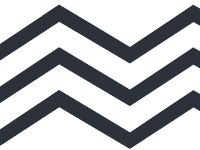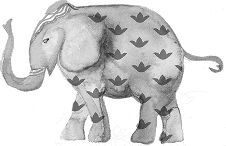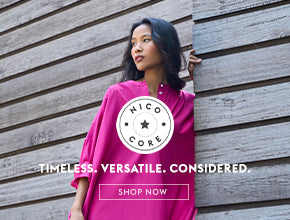Travel with Nicobar
From mood board to final design, our processes are involving, extensive, and quite rigorous. It starts with a brief or inspiration — a colour, something from nature, or an architectural reference — that defines the products and mood for the season. From there our sourcing team builds on the mood with fabrics (or materials) that nail the brief. “If our inspiration is, say, a waterfall, we give our design team options that keep in mind the drape and weight of the fabric”, explains Priyanain, an integral part of our sourcing team. With the fabrics picked out, we do lab dips — our partnering mills process swatches of colours we want to work with — that are eventually used to dye the entire bulk of fabric. Then come fit samples that we cut in-house, and finally the factory creates size sets to seal the deal.
Even though we have our process down pat, our three verticals — womenswear, house & home, and travel — have largely independent requirements, and while we get to work with plenty fabrics and materials, we’re partial to a few that feel particularly in-sync with our character.The brief for Travel
Meant to organise your travels and make them that bit more effortless, our travel collection has apparel and packing essentials that are meant for journeys long and short. So it’s no wonder that’s we’re always on the prowl for fabrics that move as we do, and fare well in both cool and warm climes sorting us for that year-long switch in temperatures.
For the love of denim
“The denim we use is not just any denim,” says Priyanain, running her fingers over the super-soft and deliciously drapey cotton denim tencel we work with. “We picked this denim because it doesn’t crease, can be layered, and the same fabric weight lends itself perfectly to a shirt, bottom, or jacket.”
The phoenix of the fashion world, denim has stood the test of time from when it became popular in the 1800s as a hard wearing fabric to Marlon Brando’s hyper-sexual bad boy depiction with denim as the medium. Our use of denim may not be trend-led, but we can’t deny its global and year-long appeal, plus its very forgiving nature with every wash. “The more you wash and wear denim, the more it takes its own character, and changes with you”, says Rajiv, our former head of sourcing (now the man behind all the visual merchandising you see in our stores).
Our deep indigo denim or the softer pastel hue is the outcome of an exacting dip-dyeing process and the number of dips the fabric receives. The resulting boldness or hi-lo fade of the denim depends on the number of washes the fabric receives thereafter.
“We embrace the nature of denim tencel with our own design aesthetic”, explains Divya, our head of travel design, referencing little embroidered details picked out on our travels, gold and silver foil stamps, and stitches that add a little flourish. Our designs need that aspect of utility (and practicality) for travel as well, so you’ll find pants with elastic hemlines that can be hiked up when you’re wading through marshy land or at a public washroom, and dresses with pockets because we know how essential that little element is. “We intend for our denim pieces to stay with you for many, many years”, finishes Divya.
Care for your denim
“Denim tencel is a low maintenance fabric, so you don’t need to go the extra mile to look after it”, is Priyanain’s word. Wash it away from other colours as it’s an inherent quality for denim to bleed, but the resulting fade is also what adds to the charm of the fabric. Apart from that, wash it as you would, wear it as you would, and store it in canvas or thick cloth inserts.
 Corduroy, Nicobar style
Corduroy, Nicobar style“This is the first time we’ve worked with corduroy”, says Priyanain. This season just past, our inspiration was all things military and utilitarian uniforms, and so we tinkered with military-inspired patches and carefully considered pockets. “We needed a fabric that’s rugged and perfect for knockabout clothing, while being lightweight (so you can travel with ease) and in sync with our military inspiration”, explains Priyanain. After a fair bit of research, keeping in mind the weight of the fabric, we found a super lightweight corduroy with a lovely handfeel that nailed the brief.
Our corduroy is a lasting alternative to denim, and its repetitive parallel lines symbolise a sort of order that’s so in tune with our military inspiration. Originally built for the working class with ancient ties dating back to to the Egyptian city of Al-Fustat, we love that its luxurious and functional all at once, can be dressed up or down, and be worn layered or as is.
“Keeping it cohesive, we dyed our corduroy indigo to match the palette of our Travel capsule”, adds Priyanain. Little flecks of dragonflies and hot air balloons pepper these pieces mirroring icons picked out on our travels. “We’ve crafted silhouettes that are easy to wear all year round and the fact that this corduroy actually works with poplin”, explains Divya referring to the half-and-half indigo dress “shows how light it is from a technical construction point of view and perfect for every sort of season.”
Care for your corduroy
Corduroy is a practical fabric and fairly rugged, so much like our denim it’s fairly low maintenance. Wash it with like colours and in cool water (if they’re dark corduroys like ours), hang it out to dry to naturally iron out any wrinkles, iron it inside out (if required), and store it in cloth or canvas inserts (or leave them hanging as is if you’re not too precious about storage).






















 GET IN TOUCH
GET IN TOUCH